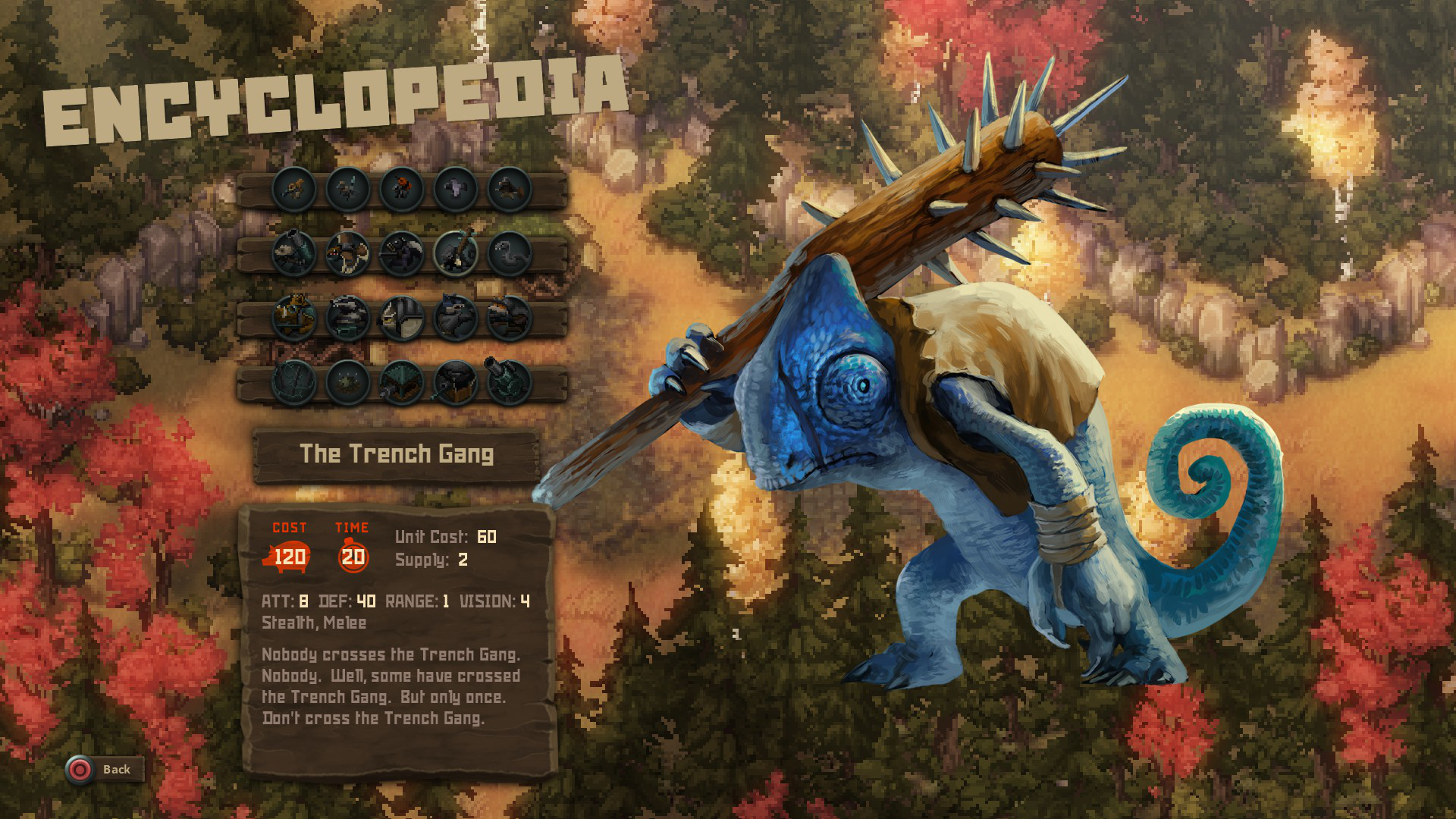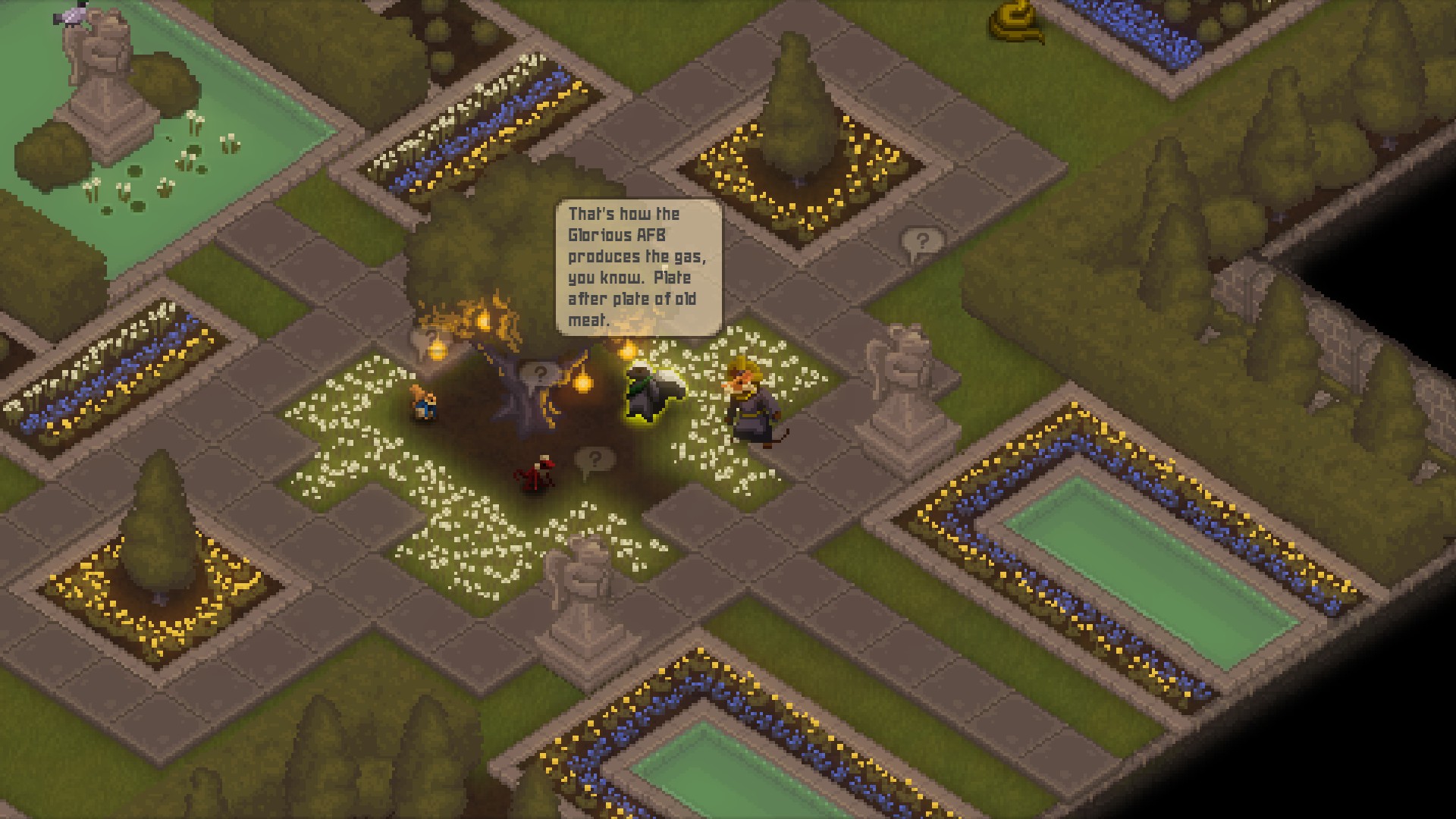Tooth and Tail is one of the most accessible and memorable RTS games to date.
Genre: Action, Casual, Strategy
Developer: Pocketwatch Games
Publisher: Pocketwatch Games
Release Date: Sep 12, 2017


RTSs are a genre that has always engaged me thematically and in their spectacle, yet mechanically they never clicked for my younger self. As someone who dabbled in RTS games like Halo Wars and who enjoyed the original Starcraft only with cheats as a teenager, Tooth and Tail is the entryway I always needed to master these games. What always deterred me away from RTSs was the complexity and the dexterity required, and T&T manages to take both qualities, simplify them, and retain all their flavor. In short, what Skullgirls is for fighting games is what Tooth and Tail is for RTSs, or as the tagline says “real-time strategy distilled” like a fine wine.

Trimming Off the Fat for the Kids
Where games like Starcraft: Brood War are as taxing of athleticism due to UI oversights and micromanagement as strategic with their unit/building tactics, T&T manages to level the skill-floor enough to demand players to truly understand the mechanics. There are four major overhauls of RTSs that make the game both accessible and more demanding of skill. If the developers truly sought to emulate Hearthstone/Blizzard for accessibility, then it’s safe to say they have succeeded in making a game casual enough with its changes to enjoy and dedicated enough at its core for the hardcore base.
The first major point overall are the controls themselves which turns players into cursors. While controls are perfectly acceptable on a mouse-and-keyboard, the controller scheme is more ideal with how players maneuver general units as visible (and killable) cursors. All actions from base-building, unit direction, targeting, etc. are all coordinated with general units, which allows players not only the means to see what their enemies are planning but also offer offensive/defensive roles as unit direction is their sole role. This takes away the unknowns of gauging the enemy’s movements from RTSs where hotkeys, clicks and other unseen factors cannot be taken into account. It further enhances the need for strong map control and the coordination of battles as generals can move specific units (Rally Group) or entire armies (Rally All) along with burrowing home or to another location to redirect them.

Resources are also used more thoughtfully than other RTSs as it’s not simply a number to build up a base, unit, etc. but also a factor that must be considered everywhere. Food is intrinsically tied to base/unit building as players can easily starve themselves into defeat if they waste resources by the accumulation of errors. Food is used for everything from building new farms to harvest more food, from refilling lost units at bases, and from determining what structures/spawn-camps are worth keeping. Having too many tier one units could be good for a while until they begin dying in mass numbers to the player’s demise. This also rewards good defenses as they can be cheaply made and cause more harm for the other player.
Opportunities and mistakes are more vital than ever as the length of a match now cuts out a lot of the fattier aspects of RTS. The average time for a match, single-player or multiplayer, is between five to twenty minutes per session. Think of Starcraft 2’s rhythms of playing versus the original game’s crawl of every match. As a result of this condensed focus, every minor mistake can quickly build into failure, and it’s mainly knowing how to quickly solve a problem that will prevent defeat. Even in defeat, it’s not as much of a time-commitment to make learning not as fun as eventually winning against the odds.

The last of these major changes is unit synergy. RTSs often focus on asymmetrical armies to establish how they should play as well as offer different means of engaging different players. Instead of different armies, T&T allows players to choose five types of units from four tiers (three infantry; one defenses) out of 20 options. None of these options are useless, and if a certain unit type has a counter then attrition will often make up for a defect. (The game doesn’t limit you on each tier, but it’s best not to spend all in one place.) Aside from certain meta strategies, if you were to play the game with bots for 1v1, 2v2, or free-for-all, there is a huge potential for versatility, especially team-play where players can make up for any defects.
All these factors are what makes the initial buzz stave off the hangover moments where defeat sometimes was never in your favor no matter how hard you try. Even in these small sobering moments of T&T’s faults, the best solution is simply to play another round.

”Everything Is NOT Going to Plan!” “That’s Okay.”
If I were to come up with a made-up probability to showcase how often victory feels, then there would be two general statements made of Tooth and Tail. For multiplayer, which the only matches I lost were during Free for All, it often feels like there is an 85% chance of winning with the rest of the odds determined by the randomized map, the units chosen and the mistakes that often come back to bite you. In the campaign, it often feels like there is a 75% chance of winning as some of the more demanding/restricting missions, excluding the finale which is meant to be brutal, required multiple attempts even when I knew what to do.
T&T attempts to solve a problem of memorization to get more players to think about their strategies at the cost of properly teaching the player how to execute them. The most obvious omission is the difference from Rally Group vs. Rally Army as it’s not immediately obvious what it does—at first, I thought it was a local rally with no indication of its range—until I learned it is dependent on the unit you have selected. This was a lesson I had to learn on my own when using special units like the Fox for more efficiency. In comparison to SC1, T&T’s missions do teach players techniques, unit synergies and other necessary tidbits to master the gameplay. This is what often the Heroic achievements are meant to do as they steer the player on the intended path of victory for certain missions, which depending on the RNG of the maps, they can make missions more difficult than intended.

Now most players would argue that additional difficulty modes are needed, which isn’t an absurd claim when bots have different AI levels, but I think overall the game’s difficulty is warranted to appreciate its depth. RTSs themselves are not about solely optimal strategies but knowing how to adjust to new challenges when things don’t go according to plan. The RNG of maps could be tweaked further, especially for 2v2 and FFA modes, or the campaign can have preset-maps for lower challenges—along with the system that is in place—to make it more approachable for newcomers. However, the low time for commitment of each map and the thrill of overcoming success after a dozen failures makes the campaign something worth overcoming for a real sense of pride and accomplishment.

Victory Has A Hundred Fathers, But Defeat Is a Well-Fed Orphan
Perhaps what makes me more critical of the campaign mode’s faults is that the campaign is what initially drew me into getting over my gripes with RTSs and learning how to appreciate them. There is a lot of atmosphere, attention to detail in art, character and world-building as well as the overall dark comedy of T&T’s narrative that manages to make Animal Farm look tame in comparison with its level of violence and of its sociopolitical commentary. (It’s not as deep of a commentary but the effectiveness of its message is what makes it more impactful.) Even in the finale, which is purposely so unfair that defeat is not intended, makes for one of the most memorable RTSs to date, mechanically and thematically.
If you can overcome Tooth & Tail’s moments of despair into your personal triumph, then you not only have the hundreds of other victories to look forward to but all the games that inspired it now to explore.










